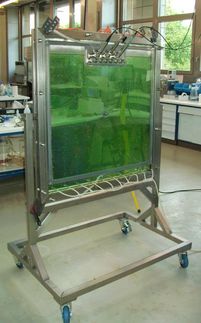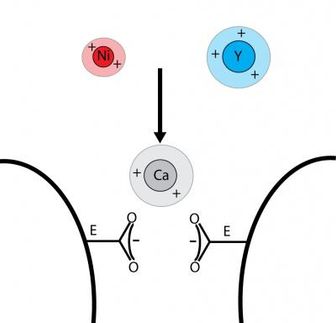Heavy metal paradox could point toward new therapy for Lou Gehrig's disease
New discoveries have been made about how an elevated level of lead, which is a neurotoxic heavy metal, can slow the progression of amyotrophic lateral sclerosis, or Lou Gehrig's disease – findings that could point the way to a new type of therapy. The results surprised researchers, since lead is also a known risk factor for ALS. This paradox is still not fully understood, and at this point would not form the basis for a therapy, as lead is toxic for the nervous system. But scientists say the phenomenon may lead to promising alternative approaches to the gene therapies that are now a focus of study.
The research was just published in Neurobiology of Disease by researchers from the Instituto Clemente Estable and the University of the Republic in Montevideo, Uruguay, and at Oregon State University. The research has been supported by the National Institutes of Health.
"We know that environmental exposure to lead is a risk factor for ALS," said Joseph Beckman, holder of the Ava Helen Pauling Chair in the Linus Pauling Institute and director of the Environmental Health Sciences Center at OSU. "That's why it's so surprising that, according to studies done with laboratory animals, higher levels of lead appear to significantly reduce motor neuron loss and progression of ALS."
Research will continue to explore the underlying mechanisms that may be causing this, Beckman said. But the findings also raise immediate questions about the wisdom of chelation therapy in efforts to treat ALS, which many people have tried despite no evidence that it works. Chelation therapy tries to remove heavy metals from the body, including lead.
"Many people have spent thousands of dollars on chelation therapy to treat ALS, despite a lack of scientific evidence that heavy metals are causing the disease," Beckman said. "These findings about the potential protective mechanism of lead now raise concerns about the rationale for chelation therapy in treating ALS."
According to Beckman, some of the findings about the role of lead in this disease evolved out of collaborative research OSU is doing with universities in Uruguay, where significant numbers of children from impoverished families are suffering from lead poisoning caused by setting up camps over abandoned lead factories near Montevideo.
"In this area there are huge problems with lead poisoning, mostly in children," Beckman said. "People are being exposed through their water, food, other environmental sources, and we've worked there for a number of years to learn more about the neurotoxicity of lead exposure."
Lead appears to have some interaction with astrocytes, Beckman said, a special type of cell that is believed to influence the spread of ALS. Astrocytes are a major component of brain cells and, in healthy systems, help to support neurons, defend them against infection and injury and remove neurons when they become damaged.
This delicate process, however, may get disrupted in ALS, at which point astrocytes are believed to play a role in causing inappropriate motor neuron death.
"These systems are very carefully balanced and many factors have to work together," Beckman said. "The proper functioning of astrocytes is essential to life, but their dysfunction may lead to disease. We think that lead somehow is modulating the neuroinflammatory actions of astrocytes and, in the case of ALS, helping to shift their balance back to one of protection, rather than damage."
When that happens, researchers say, it appears that astrocytes can stimulate the production of "vascular endothelial growth factor," which in turn protects motor neurons. Researchers around the world see increases in this growth factor as a possible way to help treat ALS, and most work is now focused on gene therapies to accomplish that. More research is necessary to determine the mechanisms by which lead has this protective effect, which may help to identify pharmacological targets for the disease.
The levels of lead that were therapeutic in the mice have toxic risk in adult humans, the researchers pointed out. However, as more is learned about how lead is affecting ALS, alternatives to lead might be found to accomplish the same goal.
"Available evidence supports the view that astrocytes are key targets of lead and respond to it by inducing neuroprotective pathways," the researchers wrote in their report. "Our results suggest that lead activates a novel pathway able to reduce neuroinflammation and slow neurodegeneration in ALS."




















































